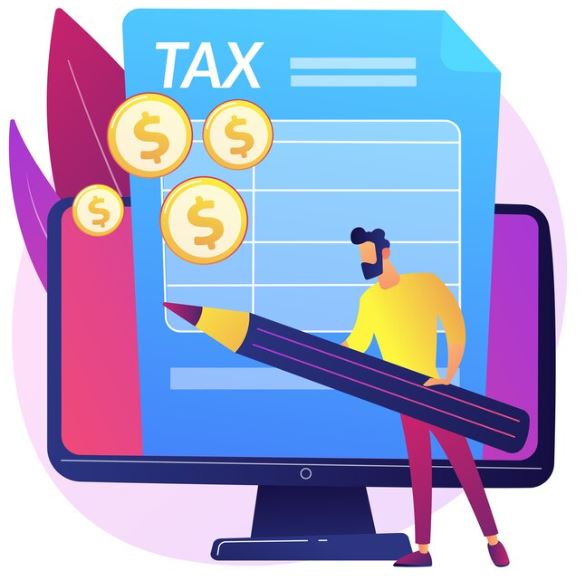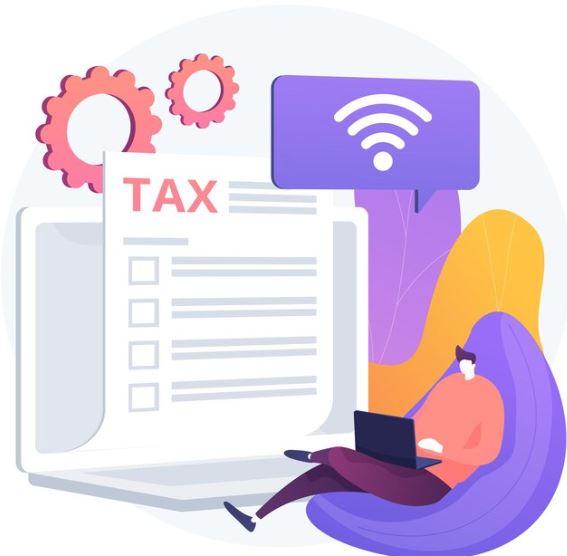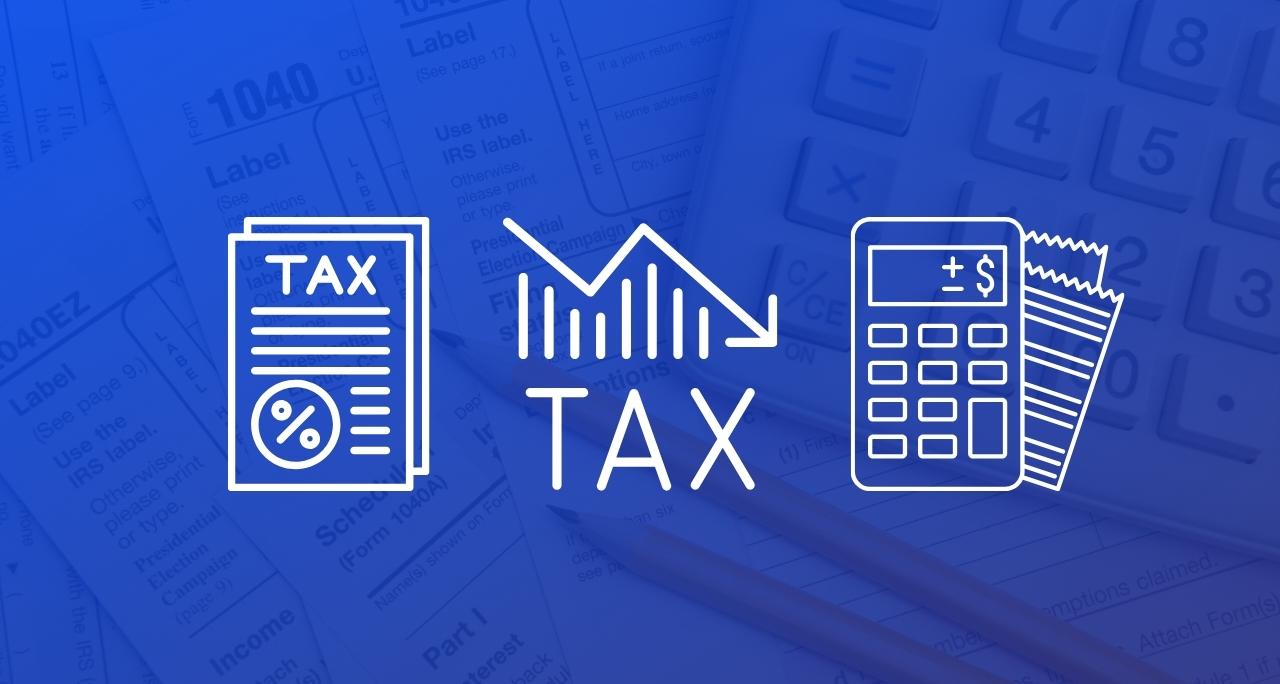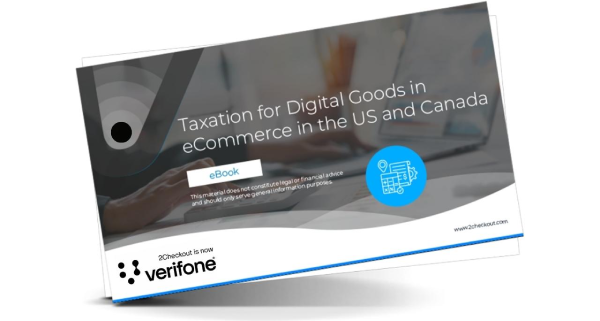In the blink of an eye, the digital goods market has rapidly exploded from a niche sector to a large chunk of the eCommerce landscape. Valued at over six trillion USD as of 2023 – that number is expected to grow to over nine trillion by 2027.
Such rapid growth has revolutionized how consumers shop and sent governments worldwide into a frenzy, trying to adapt their tax policies to keep up with this new reality.
The result? A complicated set of rules and regulations spanning the North American markets – the United States and Canada. Adding fuel to the fire, each state/province has their own variations of tax rules – leaving online sellers scratching their heads in confusion and frustration.
Our aim with this blog post is to shed some light on this complex issue, covering a range of information on the for the North American markets.
This is your starting point if you’re considering expanding your business into these regions.

Digital Goods: What Are They and How Are They Taxed?
The challenge with taxing digital goods comes from their very nature – they’re intangible and can be delivered across borders instantly. This makes it difficult to determine where the sale actually took place and which government should collect the tax.
For example, if a person in Germany downloads a song from a U.S.-based music platform, who should collect the tax? Should it be Germany, where the consumer is located, or the U.S., where the platform is based?
Different countries have different rules, and this can lead to confusion for businesses selling digital goods internationally. They may need to comply with multiple tax laws, and sometimes these laws can conflict.
For instance, about half of the states in the U.S. have tried to simplify tax obligations for cross-border businesses through the Streamlined Sales Tax Governing Board. Yet even these states don’t have a standardized definition of a digital good.
Regardless, any business operating in North America must be aware of its tax obligations on a region-by-region basis and prepare accordingly.
Important Definitions
Digital Services and the Digital Services Tax (DST)
Taxation of digital goods refers to how governments apply income taxes to products or services sold and delivered electronically. These include eBooks, music or video downloads, software, and online games.
However, there’s a debate about whether digital goods should be taxed at all. Some argue that taxing digital goods could slow down the growth of the digital economy. Others believe that as digital goods become a larger part of the economy, not taxing them could lead to significant revenue loss for governments.
In an attempt to create a standardized taxation framework, 137 member states of the Organization for Economic Co-operation and Development (OECD) agreed to certain thresholds and tax rates based on revenue, the size of the host country’s economy, and exemption mechanisms to avoid double taxation.
This agreement aims to abolish the current digital service tax regimes from all over the world. Still, it’s important to note that many individual states, provinces and local jurisdictions have their own set of enforced tax rules.

Economic Nexus
Economic Nexus is a legal relationship between a seller and a state or local government when it comes to taxing digital goods. This connection allows the government to charge and collect taxes for the sale of the vendor’s goods or services.
Each state has its own way of deciding whether there is a nexus, but some things considered are:
- Whether the vendor has a physical presence in the area (real property, operations, or staff);
- Location of the sale or customer;
- The total value of all goods or services sold;
- How the good or service is delivered;
- Who owns the goods or services.
Figuring out if your business has a nexus in a specific region can be difficult. Your payments platform should have built-in tools to help you determine your tax obligations for each market.
If not, you might have to acquire extra specialized software or consult with a nearby tax professional for guidance.
Threshold
This term plays a crucial role in determining a vendor’s tax obligations.
A Threshold is a legal standard used by tax authorities to determine if a vendor has an economic presence in their jurisdiction.
Think of the Threshold as a tipping point. If a vendor’s sales reach this amount, they must collect and remit sales tax. Below this point, a vendor may not have any sales tax obligations.
Registration
Lastly, let’s talk about compliance with local tax authorities.
If you sell digital goods or services in a market where sales tax is collected, or if you have an economic nexus in the region, you must register with the local tax authority and collect and remit sales tax.
For more information on complying with the North American registration requirements, check out our 2023 Guide to Taxation eBook.

Private Letter Ruling
This is a written decision provided by the US Internal Revenue Service (IRS) to address a taxpayer’s inquiry about their tax responsibilities – think of it as a personalized guide.
This clarity can help you plan your business strategies more effectively and avoid potential tax pitfalls.
Indirect Taxes
These are extra charges that you pay when you buy something. They’re added to the price of the goods or services you buy and are collected by the seller.
Depending on the region, these levies go by different names in different places, these include:
- Sales tax;
- Value-added tax (VAT);
- Goods and services tax (GST).
As a merchant, it’s your job to know about these taxes in each market you operate in. You’ll need to add these taxes to your prices for digital goods and services, collect them from your customers, and send them to the right tax authority.
Understanding and handling these taxes correctly is a key part of doing business and can help you avoid surprises.
The Taxation of Digital Goods in The United States
As mentioned, the U.S. doesn’t have a national sales tax or standardized rules for defining digital goods and services. Even the laws defining economic nexus can vary from state to state.
This diversity results from the American political system, which gives individual states significant power to set their own economic and social policies. So, the rules for setting, assessing, and collecting sales taxes are determined at the state and local levels.

US States That Do NOT Collect Sales Tax of Any Kind
These states, known as the NOMAD states, don’t collect sales tax on purchases, including digital goods and services:
- New Hampshire
- Oregon
- Montana
- Alaska
- Delaware
US States That Collect Sales Tax on a Limited Basis
Next, we have states that only collect sales tax for certain types of digital products and services. As of the start of 2023, these states are:
- California
- Florida
- Georgia
- Missouri (new rules applicable starting with January 2023)
- Nevada
- Oklahoma
- Virginia
For a more detailed tax guide on each individual state, check out our eBook, “Taxation of Digital Goods 2023.”
The Taxation of Digital Goods in Canada
Navigating the taxation of digital goods and services in Canada can be a bit of a challenge.
Similar to Europe, Canada has a federal indirect tax on all tangible goods and services, including digital ones. But it also has regional taxes at the provincial level, each with its own rules and regulations.
Let’s break down the three primary sales tax systems in Canada:

- Goods and Services Tax (GST): This is the federal indirect tax on all tangible goods and services, including digital ones. It applies across all Canadian provinces.
- Provincial Sales Tax (PST): An indirect tax at the provincial level. British Columbia, Manitoba, Québec, and Saskatchewan have their own PST, separate from the GST.
- Harmonized Sales Tax (HST): This tax simplifies things by combining the GST and provincial tax. It applies in New Brunswick, Newfoundland and Labrador, Nova Scotia, Ontario, and Prince Edward Island.
Alberta, the Northwest Territories, Nunavut, and Yukon don’t have a separate PST.
Canada Goods and Services Tax (GST) Overview
In 2020, Canada’s lawmakers established clear guidelines on the taxation of digital goods and services at the federal level. These guidelines, which came into effect in July 2021, apply to a wide range of digital products and services from music, to video games, digital subscriptions, cloud hosting and more.
As a rule of thumb, any merchant selling a digital product should consider themselves a taxable business.
A brief overview of Canada’s GST:
- The GST is applied at a national rate of 5% on all digital goods and services sold to Canadian users living within the country.
- Remote sellers with sales within the country exceeding $30K CAD in the past 12 months must register with the Canadian Tax Authorities and are required to collect and remit GST/HST on all sales.
Provinces subject to GST only:
- Alberta
- Northwest Territories
- Nunavut
- Yukon
GST Obligations:
Sellers are required by federal law to collect and pay sales tax based on the buyer’s location. They must show the tax paid on the invoice or receipt.
The Canada Revenue Agency will determine the reporting period, which is typically monthly, quarterly, or annually. Even if they have no transactions, registered sellers must file reports.
For business-to-business transactions, items sold for resale or business use are usually not taxed.

Harmonized Sales Tax (HST) Overview
The Harmonized Sales Tax (HST) is a crucial part of doing business in Canada. It combines federal and provincial taxes into one, simplifying the tax process.
For a merchant selling digital items like software or eBooks, HST will always be applied to the price, the rate however varies depending on the province. The current rates are:
- 5% (GST) in Alberta, British Columbia, Quebec, Manitoba, Northwest Territories, Saskatchewan, Nunavut, and Yukon
- 13% (HST) in Ontario
- 15% (HST) in New Brunswick, Newfoundland and Labrador, Nova Scotia, and Prince Edward Island
All HST is collected by the Canada Revenue Agency with tax compliance keeping businesses in good standing, avoiding potential fines or penalties.
Wrapping Up
Navigating the elaborate maze of digital goods and services taxation in North America can seem daunting, but armed with the right information and tools, you can confidently steer your business through it.
The secret lies in understanding the unique tax rules of each region you’re operating in, ensuring you’re not only compliant with local tax laws but also fulfilling your responsibilities as a digital goods or services vendor.
Remember, knowledge is power. The more you understand the tax landscape, the better equipped you’ll be to make informed decisions that can impact your business positively.
For a deeper dive into the world of digital goods taxation in North America, we invite you to explore our eBook, “Taxation for Digital Goods in eCommerce in the US and Canada.”






